Flora
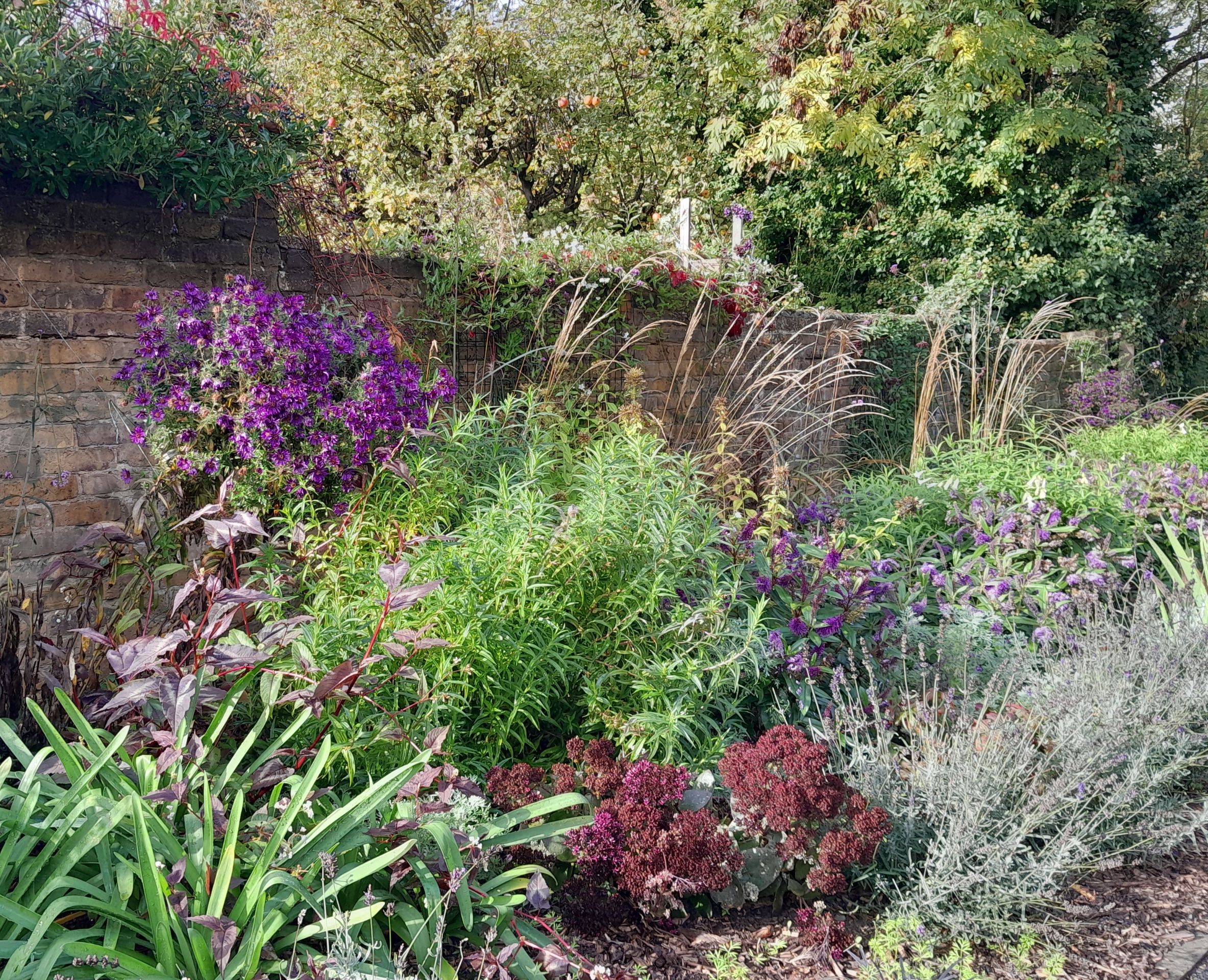
Woodland Planting
Friends volunteers have planted a new woodland area on the left bank of the river on either side of the fallen tree near Northumberland Road. This rather bleak and barren section of the river bank, covered with a bit of ivy, a few invasive sedge plants and some scrappy weeds, offered little in terms of habitat to insects and birds and was sadly recently used to dump sacks of household waste during the night. Additional soil and wood chip has been added to improve the planting area and plants were provided by a ‘Green Grid ‘ award from Harrow Council. The river bank is now home to several varieties of British native ferns, woodland plants (cowslips, primroses, hellebores) and hundreds of bulbs including wood anemones and snakeshead fritillaries, which will emerge in spring. We plan to add foxgloves, currently growing from seed, next year. The sunny section is planted with informal grasses. Warm thanks to the volunteers who spent hours preparing the site and planting, and even longer on their knees positioning and planting bulbs individually – right side up. The woodland area will take a couple of years to root and establish but should then be self-sustaining as plants mature and self-seed. The new biodiverse planting brings habitat to bugs and beetles, tasty pickings for the birds and nectar in early spring for the bees. Do take time to visit the new woodland area on your next walk in the park.
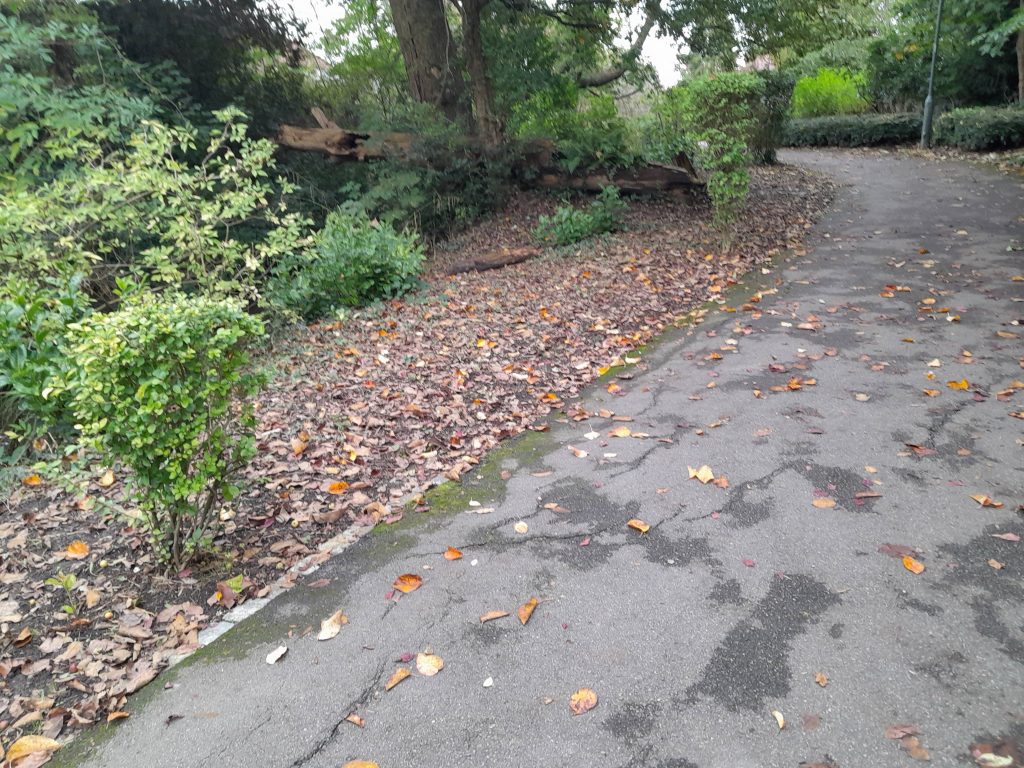
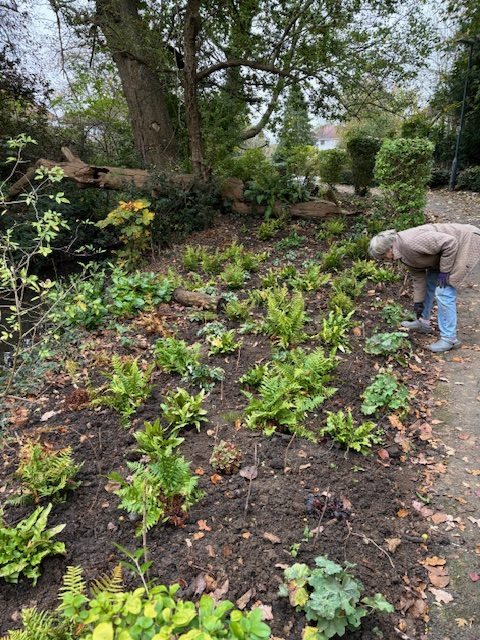
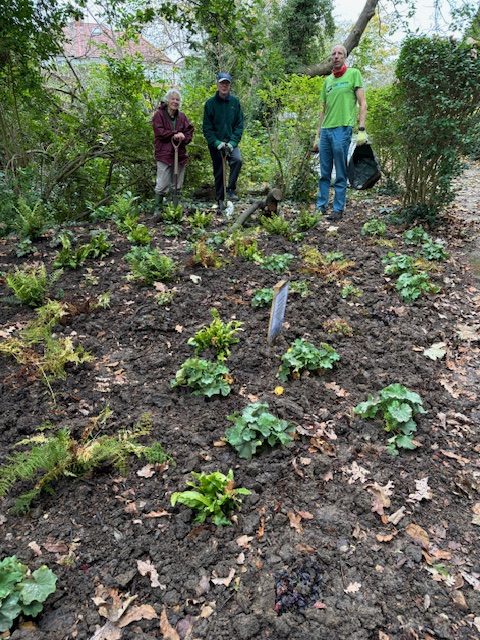
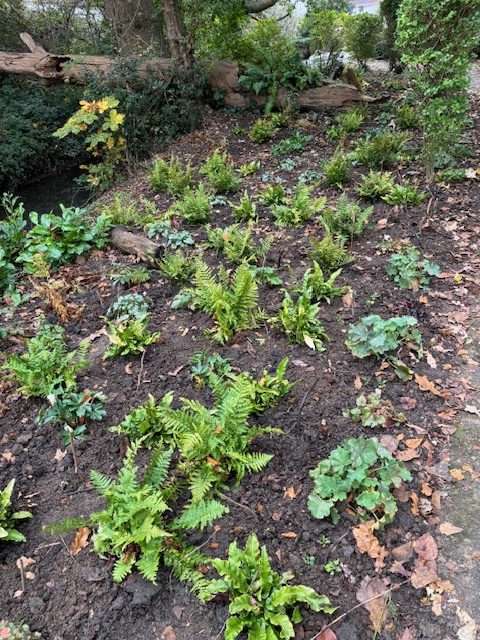
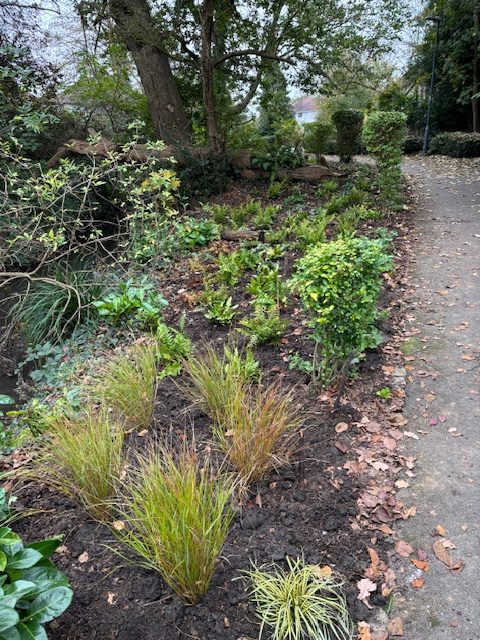
2024 off to a great start in Yeading Walk
Here is just a small selection of the beautiful flowers to be found in our park this year, most of which have been planted by the Friends of Yeading Walk.
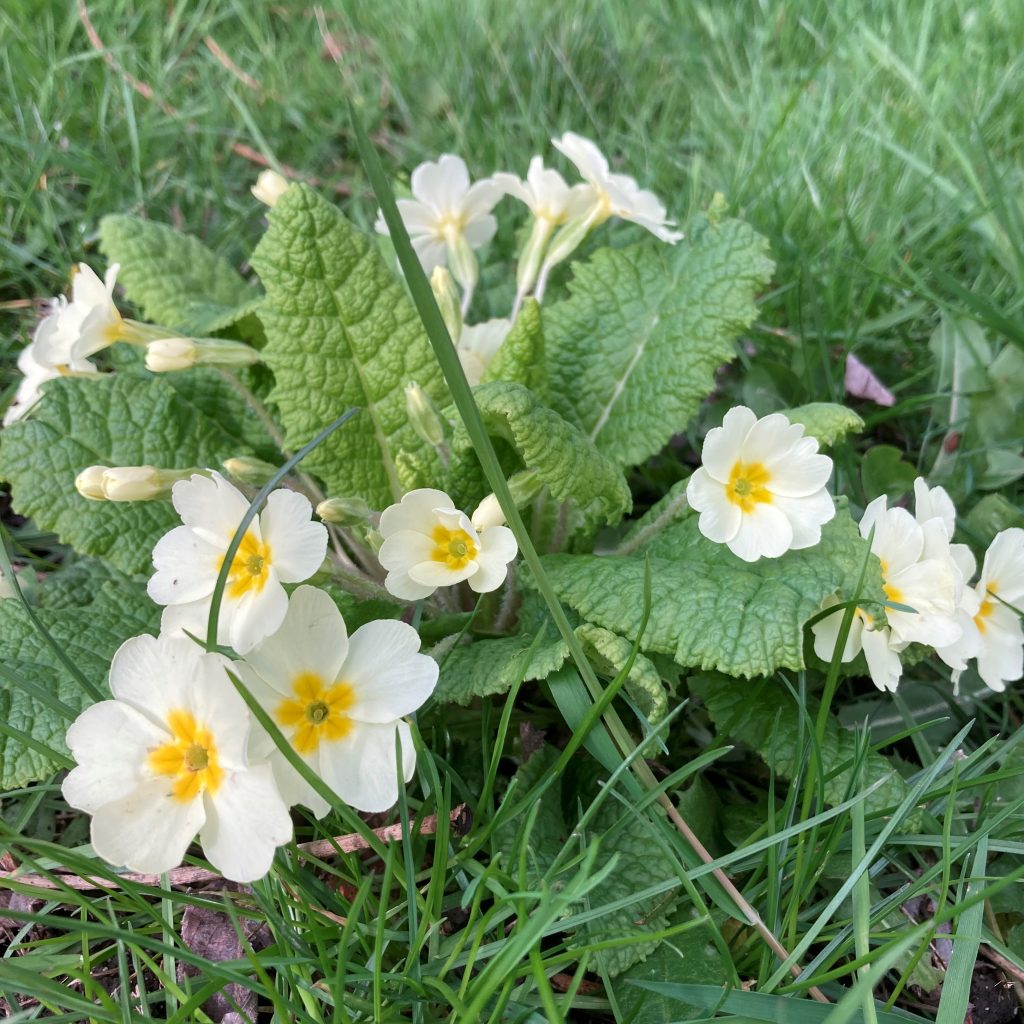
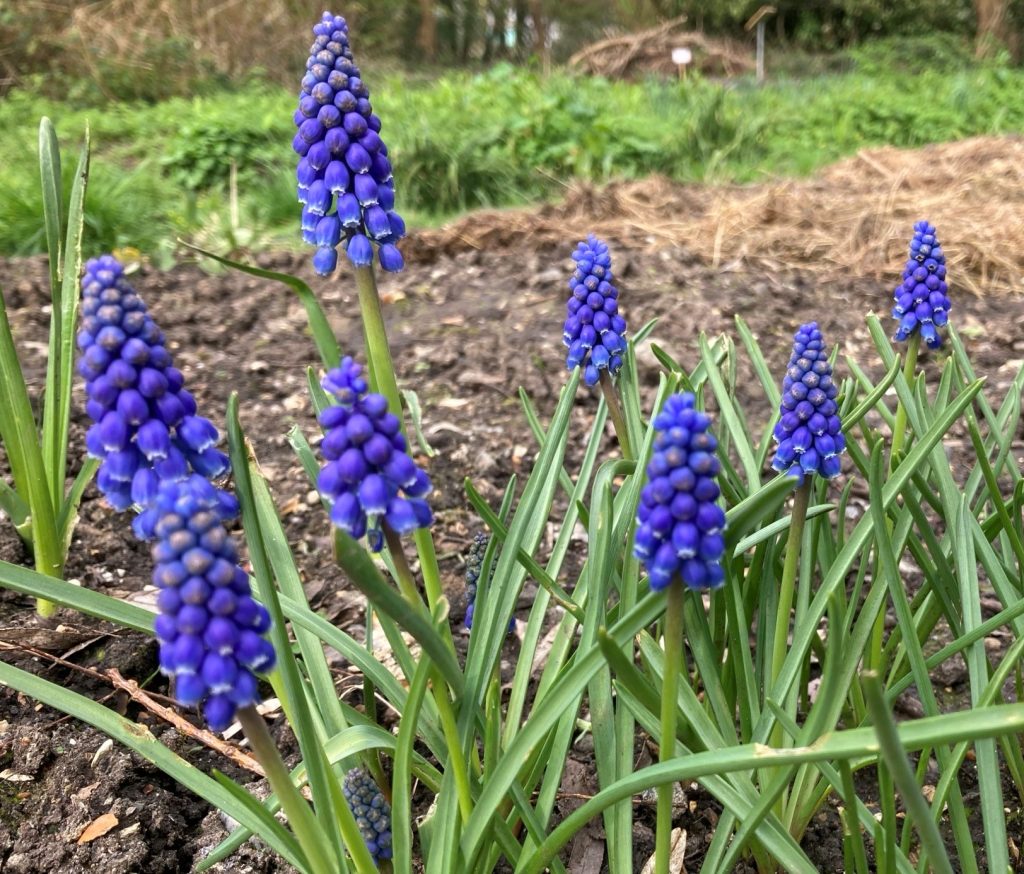
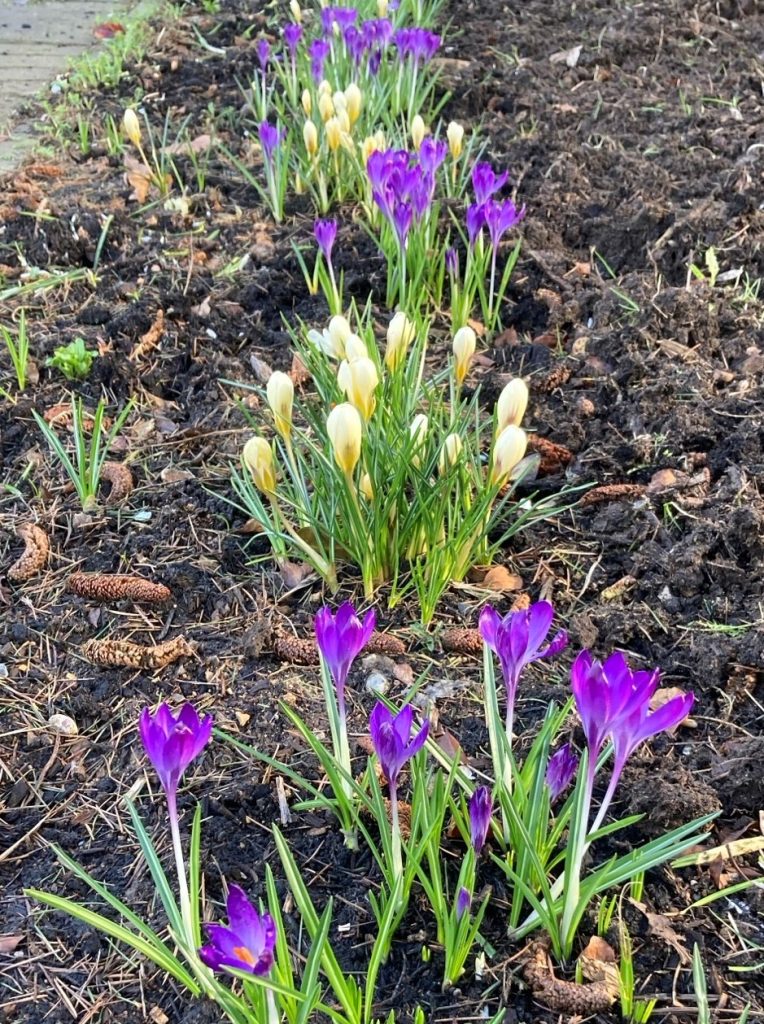
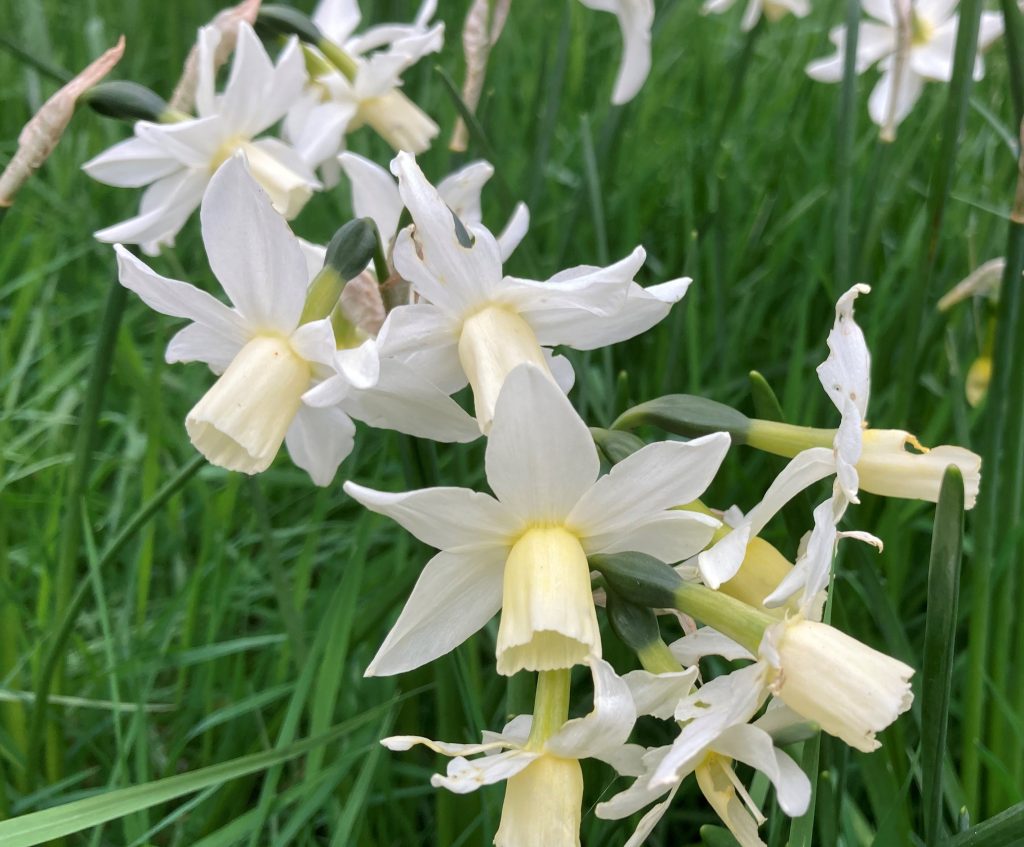
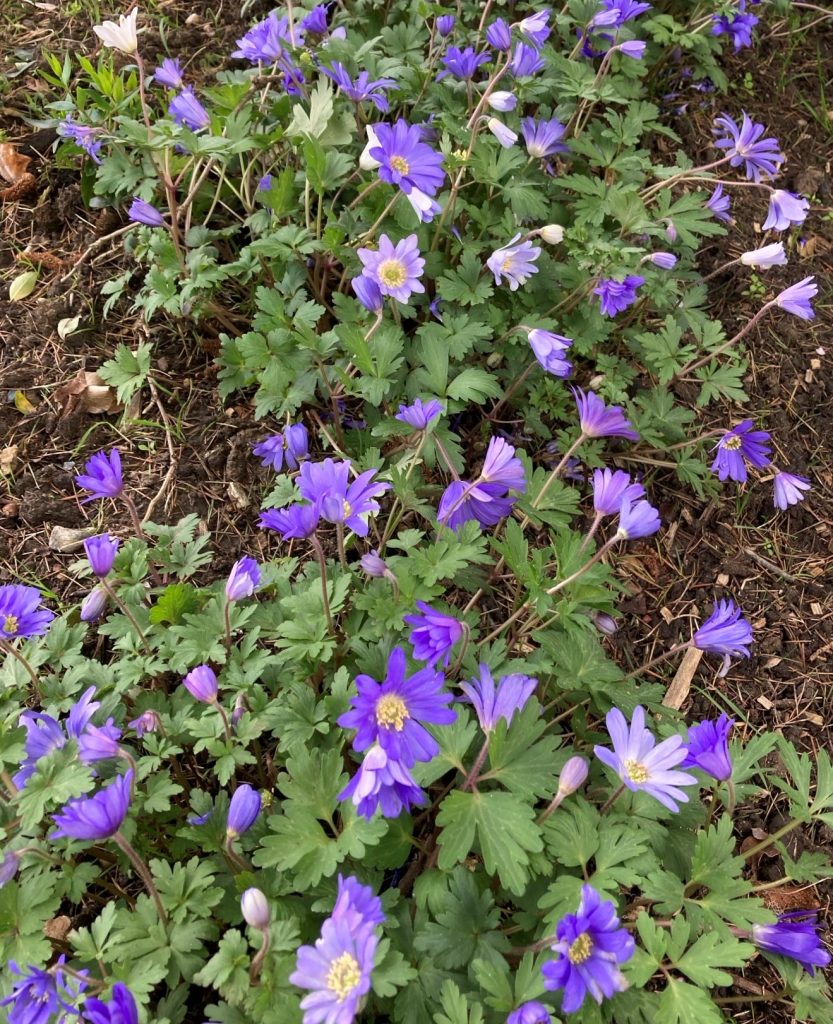
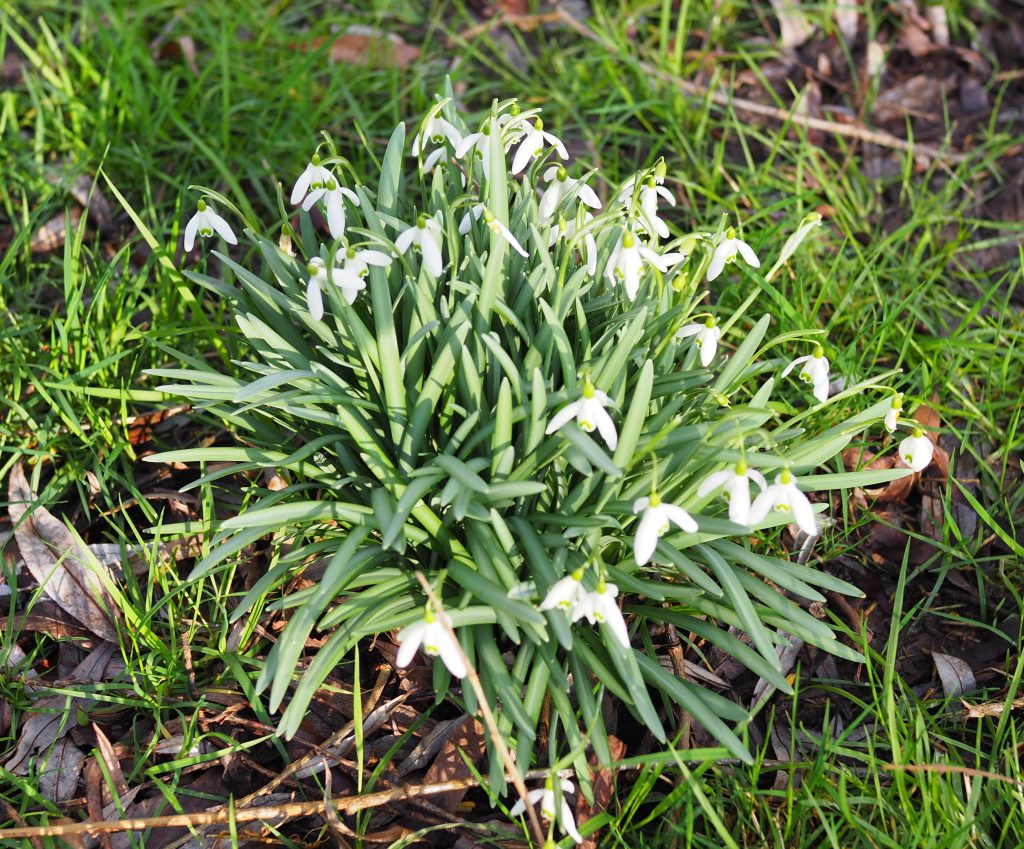
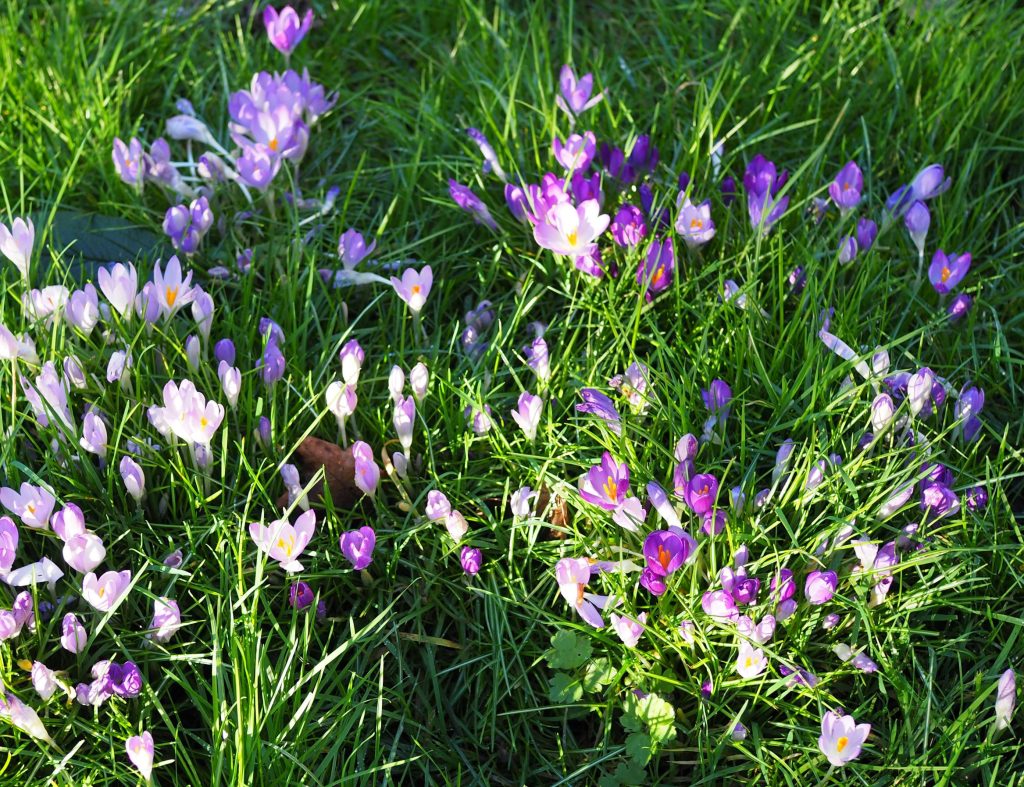
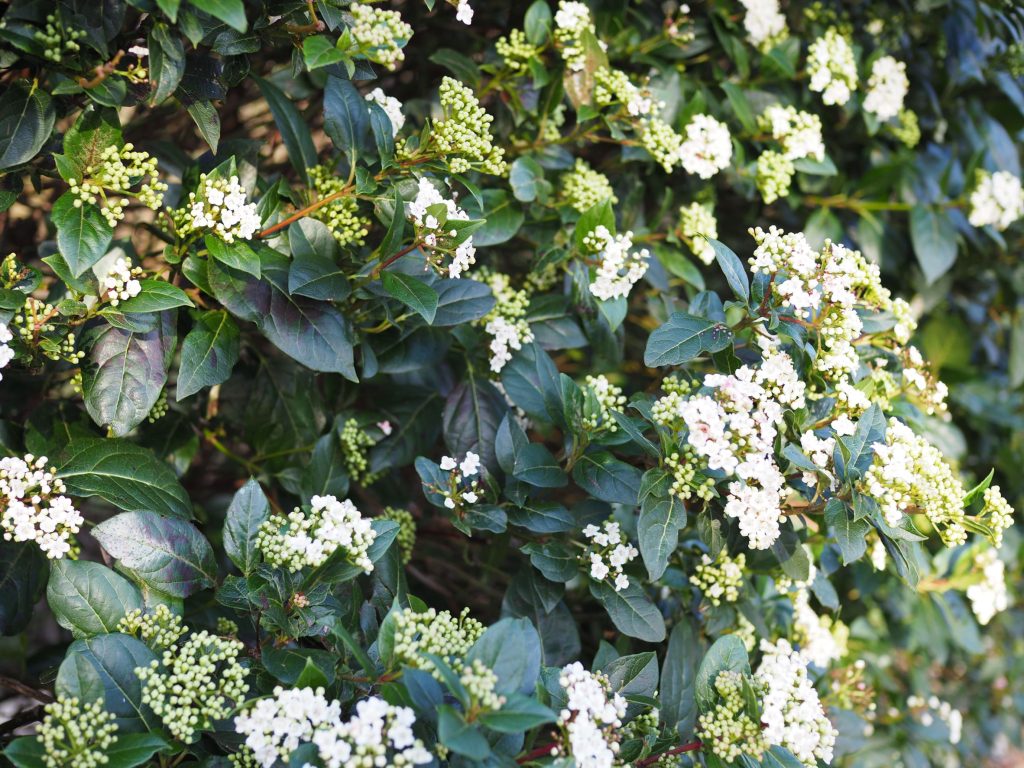
Lavender Walk Flowerbed
A park entrance should invite and delight visitors. Yeading Walk’s Suffolk Road entrance did neither. The path was flanked by a long strip of weed-filled grass on the left and a community orchard in much need of attention on the right. There was a need for a ‘Place for Pollinators and People’ to attract bees into the orchard and brighten the pathway with colour and scents from sustainable, biodiverse planting.
The Friends raised funds with a successful bid to the National Lottery Community Fund and set to work. Digging up over 90 meters of grass was tougher and took longer than expected, but we got there. The garden was designed with a colour scheme of purple, blue and white/silver with crimson highlights and then planted with help from Friends volunteers in autumn 2021.
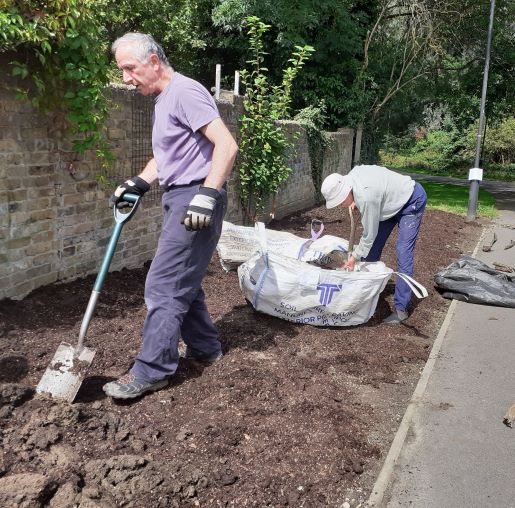
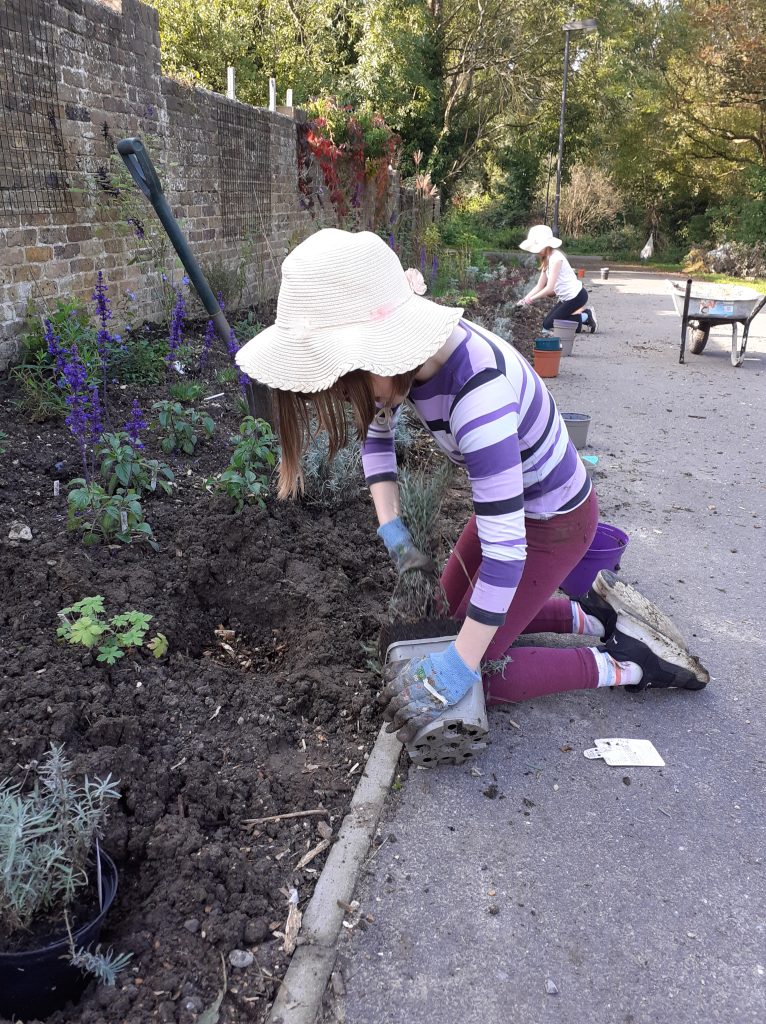
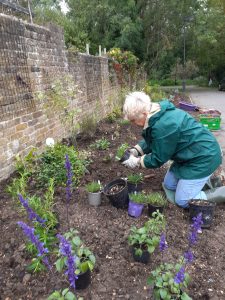
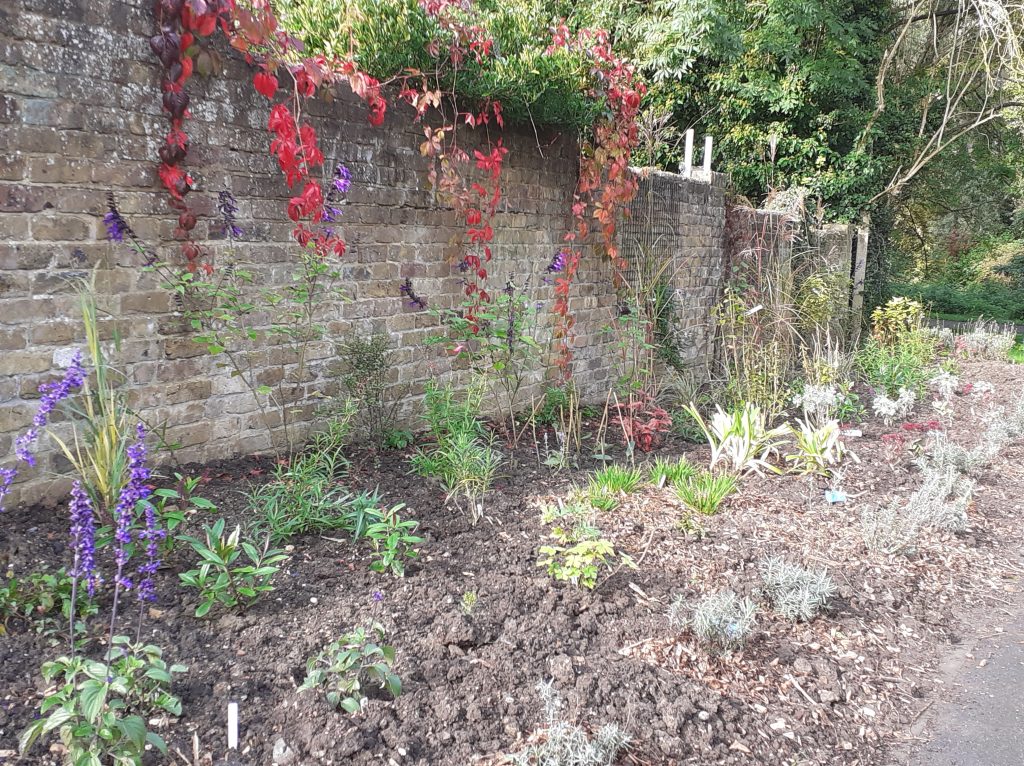
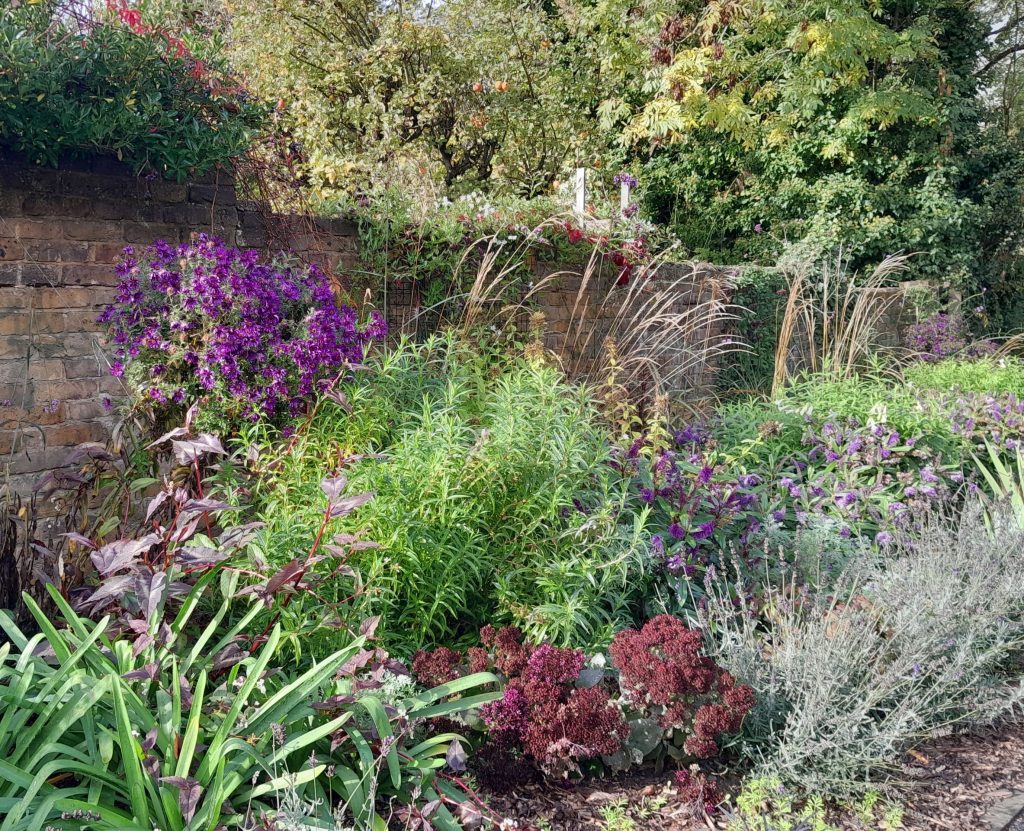
The path is flanked by Lavender augustifolia ‘Hidcote’ with a mix of grasses, evergreen shrubs, seasonal perennials and spring bulbs. Five planting grids on the stone wall support climbers, including jasmine, virginia creeper, clematis, etc.
The plants have filled out and survived the hottest summer for years in 2022 and the bed is now a haven for pollinating insects. The bases of the orchard trees were planted with daffodils, a cheering sight in spring.
A few of the plants which have intrigued visitors are:
Allium ‘Christophii’, Daffodil ‘Obdam’, Penstemon ‘Garnet’
Hebe ‘Wirri Prince’, Buddleia davidii ‘Black Knight’
Erysimum ‘Winter Orchard’, Daffodil ‘Thalia’ Penstemon ‘Wedding Bells’
The Rainbow Garden
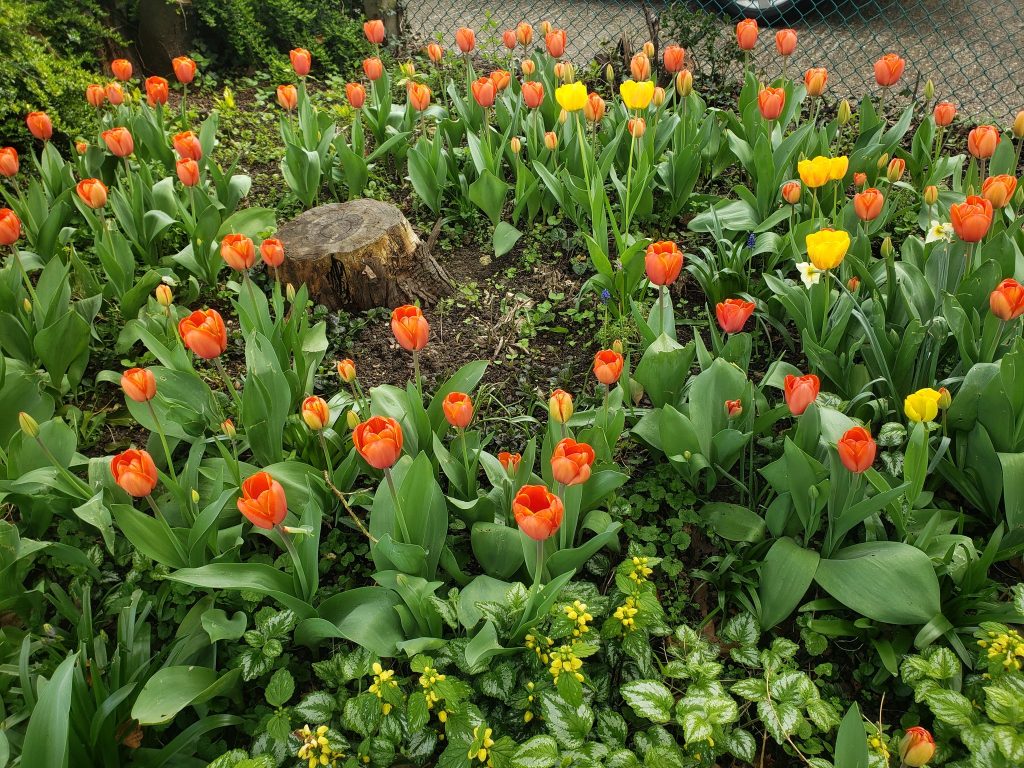
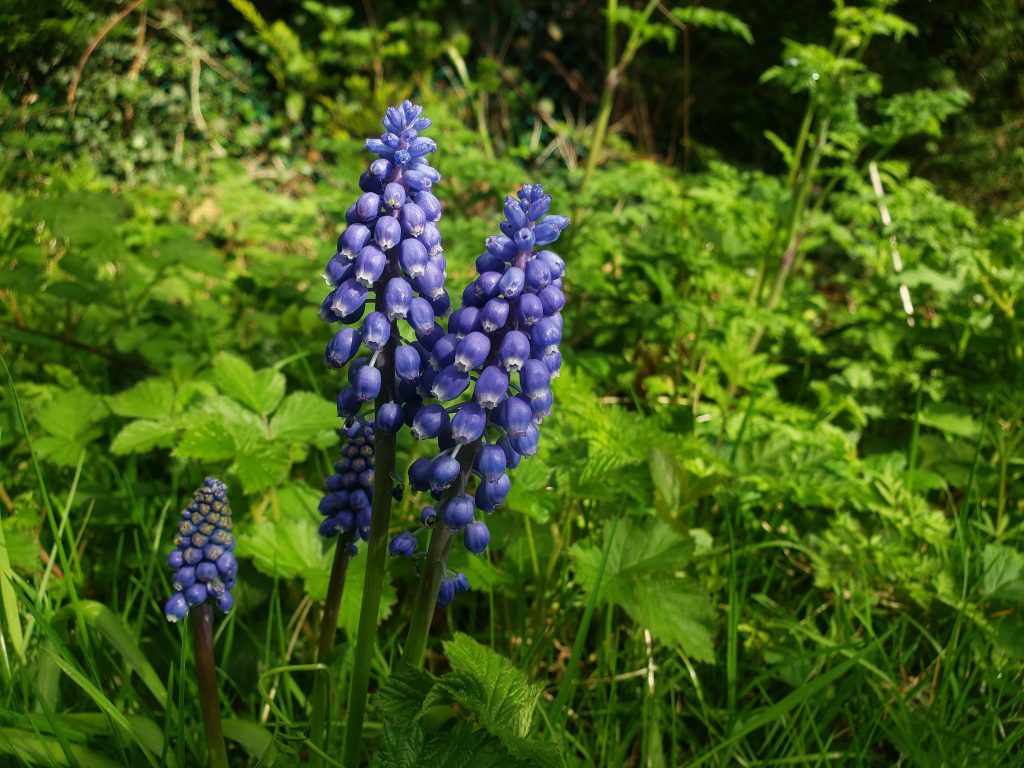
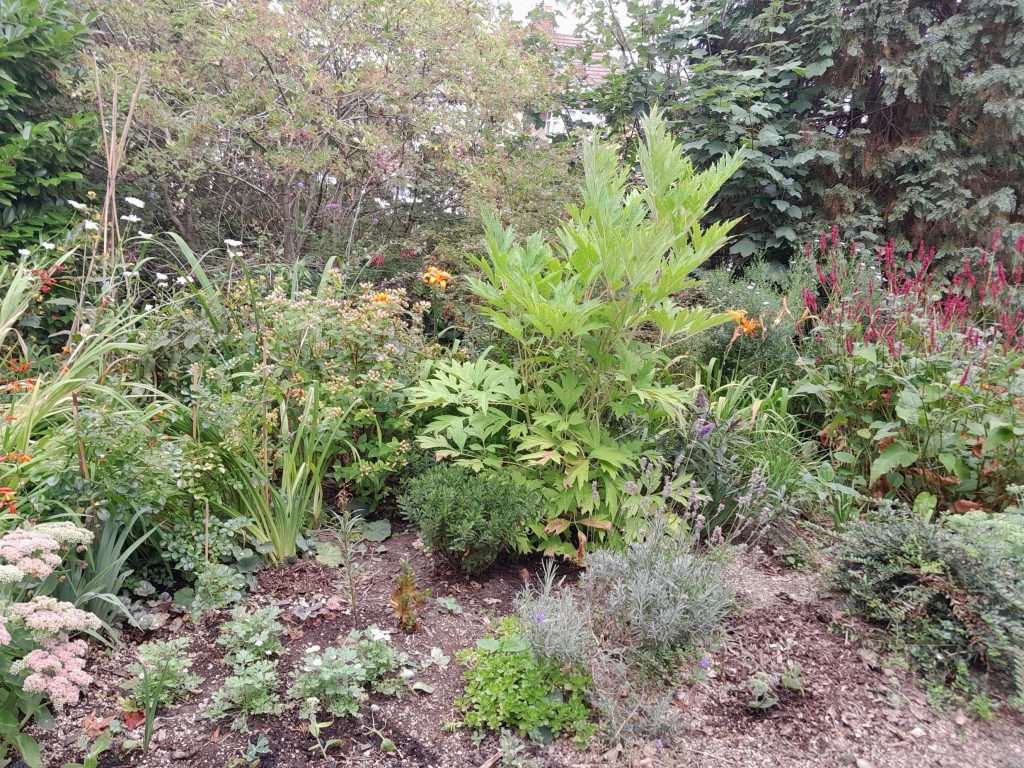
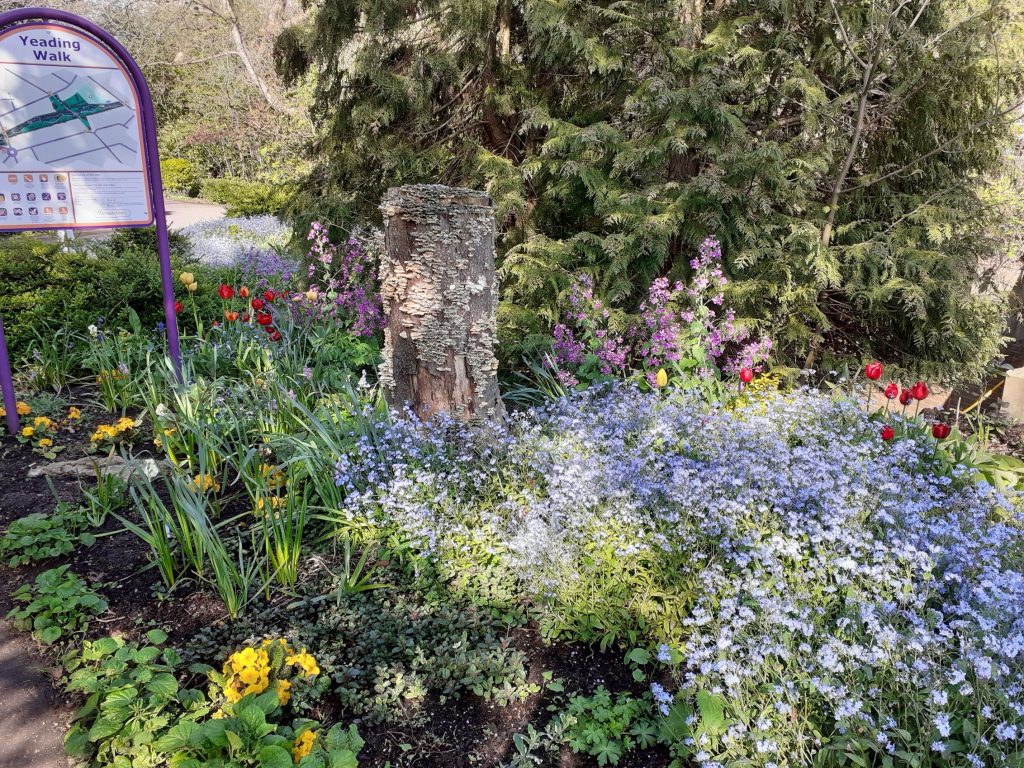
This space started with a stint of ‘guerilla gardening’ during the first Covid pandemic lockdown in March 2020. It was a neglected corner, full of weeds and rubbish at the Northumberland Road entrance to the park. With many families visiting the park for a precious 30 minutes of permitted exercise, it wasn’t a welcoming sight. The rubbish was cleared and the site weeded and dug over. A few plants brought from home were planted and a sign posted saying:
“This is our Rainbow Garden of Hope. Bring us a plant from your own garden”.
The plants started arriving and in this dark time, the garden was born. The ethos of the Rainbow Garden is that nothing is bought by the Friends. The garden was created, and survives, entirely from donated plants and remains an ongoing symbol of the generosity and imagination of our local community.
Plants had to be tough to survive heavy clay soil, hot midday sun and limited water. Early donations include hemerocallis (day lilies) crocosmia (a South African plant in in orange, red and yellow), fuschias, a couple of tree peonies, persicaria (Red Bistort and Red Dragon), linaria, hebes, grasses, a couple of dwarf conifers, flowering quinces and heather. The shadier section was filled with bulbs (tulips, daffodils, blue bells), primroses, penstemon, phlomis, white and pink Japanese anemones, honesty, several varieties of mint, climbing, fragrant jasmine, ferns and a runty little sapling which surprised us by growing into a fine Staghorn Sumac, sporting glorious autumnal leaves. The old tree stump serves as our commemorative space, marking festivals and dates of importance. The established tree in the corner is a Cornelian Cherry which produces a mass of yellow spring blossom, followed by sour red cherries.
If you would like to donate a plant to the Rainbow Garden, please send an email to foywgroup@gmail.com to alert the gardeners. Thank you for all your plant contributions!

